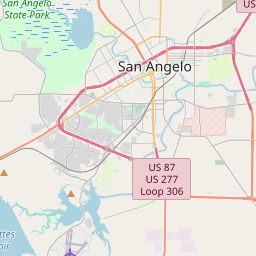Wall Brethren Church







This congregation dates from summer 1929, when Czech-speaking Brethren families from Granger, Taylor and Rowena moved here. Early services were held in worshipers' homes. In fall 1929, an unused Methodist church in Wall became the place of worship. Records show 28 active members in the first Sunday School and worship services, with 19 communicants gathered to worship the sacrament of Holy Communion in October 1929. The Czech language was spoken in Sunday School and church services. The congregation prevailed upon the Rev. Josef Hegar, then living in Temple, to be the first pastor. In 1933 members formally organized and were received into the Evangelical Unity of the Czech Moravian Brethren (later Unity of the Brethren) at the state convention held in West. In 1936, members bought a half-acre in Wall for a future church site and met for a time in Fairview. The first permanent church was dedicated in June 1937. At the state convention held in Wall in 1947, the Unity of the Brethren adopted English to replace Czech as the official church language. The growing Wall congregation dedicated a new church in Aug. 1955, with the first church remodeled as a fellowship building. New parsonages (1966, 1977), fellowship buildings (1982, 2010) and a new sanctuary (1994) followed as the church continued to grow. Wall Brethren Church supports many community programs, including Boy Scout Troop 321 and a shared community Thanksgiving service with St. Ambrose Catholic Church. Ministries include the Brethren Youth Fellowship (organized 1956) and the Christian Sisters (organized 1937), who support the church financially by baking and selling kolaches. Wall Brethren Church recognizes its rich ethnic history and the diverse backgrounds and traditions of its current members. 175 Years of Texas Independence * 1836 - 2011
As one of the most visible programs of the Texas Historical Commission (THC), historical markers commemorate diverse topics in Texas history, including: the history and architecture of houses, commercial and public buildings, religious congregations, and military sites; events that changed the course of local and state history; and individuals who have made lasting contributions to the state, community organizations, and businesses.
The Texas Rangers, a famous law enforcement agency, were first organized in 1835 to protect settlers from Native American attacks.
In the late 1800s, the county began to attract settlers looking for opportunities in ranching and agriculture. This period saw an influx of farmers and ranchers who developed the land for cattle and sheep grazing, as well as growing crops such as cotton, corn, and wheat. The population increased significantly during this time, leading to the official organization of Tom Green County in 1874.
The county experienced rapid growth during the late 19th century, thanks to the establishment of Fort Concho and the expansion of the railroad. Fort Concho served as a primary military post protecting settlements against Native American raids and fostered economic growth by providing stability and resources to the region. Additionally, the arrival of the railroad in the 1880s further spurred economic development, making transportation of goods easier and stimulating trade.
In the early 20th century, Tom Green County faced several challenges, including droughts and the Great Depression. However, the county managed to overcome these obstacles and continued to thrive. Today, Tom Green County is known for its agriculture, oil and gas production, and as a center for healthcare and education. With a rich history that encompasses Native American heritage, frontier life, military significance, and economic growth, Tom Green County has played a vital role in the development of West Texas.
Tom Green County Timeline
This timeline provides a condensed summary of the historical journey of Tom Green County, Texas.
- 1874 - Tom Green County is organized and named after Confederate General Thomas Green.
- 1882 - The first courthouse in Tom Green County is built in the city of Ben Ficklin.
- 1884 - San Angelo becomes the county seat after a contentious election.
- 1886 - The Texas and Pacific Railway line is extended to San Angelo, boosting the city's economy.
- 1899 - San Angelo is incorporated as a city.
- 1928 - Goodfellow Air Force Base is established as a training facility during World War II.
- 1952 - Construction of the O.H. Ivie Reservoir begins on the Colorado River near San Angelo.
- 1995 - The San Angelo Museum of Fine Arts opens.
- 2002 - San Angelo experiences a devastating flood, causing significant damage to the city.
- 2015 - The San Angelo Stock Show and Rodeo celebrates its 83rd anniversary.